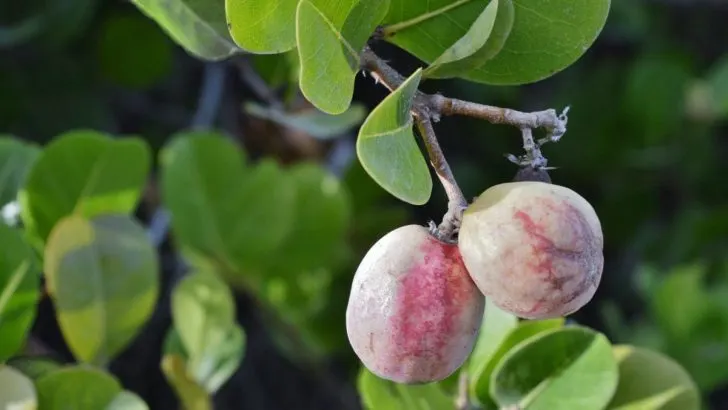Do you want a new shrub for your garden that says “classy and exclusive?” Cocoplum shrub is such a plant; today we will discuss it in detail.
If you’re getting ready to buy a new growth for your home or garden, coco plum is an excellent choice this season. It is well known for its use on tennis courts (around them).
It is located all around Biscayne bay and is grown in an exclusive yacht club. I think the locations of its use tell us much about its reputation.
How about you take some time to learn more about these amazing hedges? Let’s see why these salt-tolerant plants are so popular.
I think it’s time to enrich your properties with this lovely shrub and oily dark green new leaves. Green tip cultivar or red tip cultivar, that’s up to you.
Let’s find you a perfect inland ecotype cocoplum cultivar for your garden.
About Cocoplum Plant
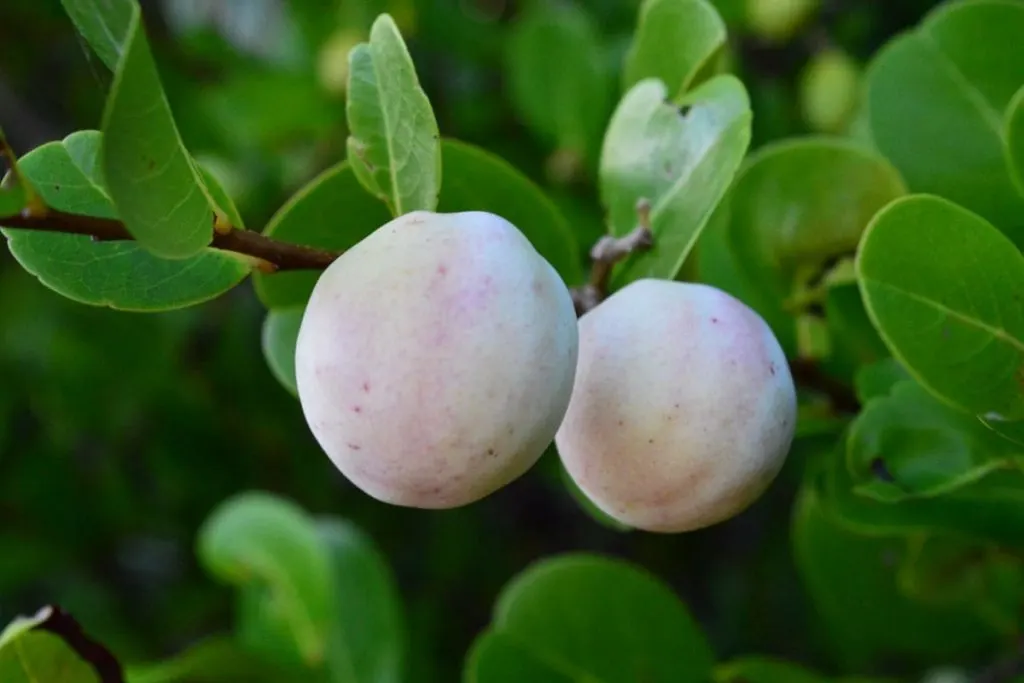
It is often called paradise plum or abajeru. The fruit of the cocoplum plant has a sweet flavor. It is used for making jams.
It’s found on exotic islands as well. The fruit/tree/shrub isn’t so popular in Europe.
The plant has two ecotypes. Leaf colors go from green to light red. On many islands, it’s a problematic invasive now.
Its ecotypes are less salt tolerant. The plant is unable to survive frost and cold temperatures.
- Botanic name:Chrysobalanus icaco
- Family: Chrysobalanaceae
- Subfamily: Chrysobalanaceae
- Height: 15 feet
- Leaf shape: V-shaped angle
- Toxicity: not toxic
- Use: hedges, landscape plants, indoor plants, edge plants, etc.
- Native habitat: South Florida
What Is Cocoplum Good For?
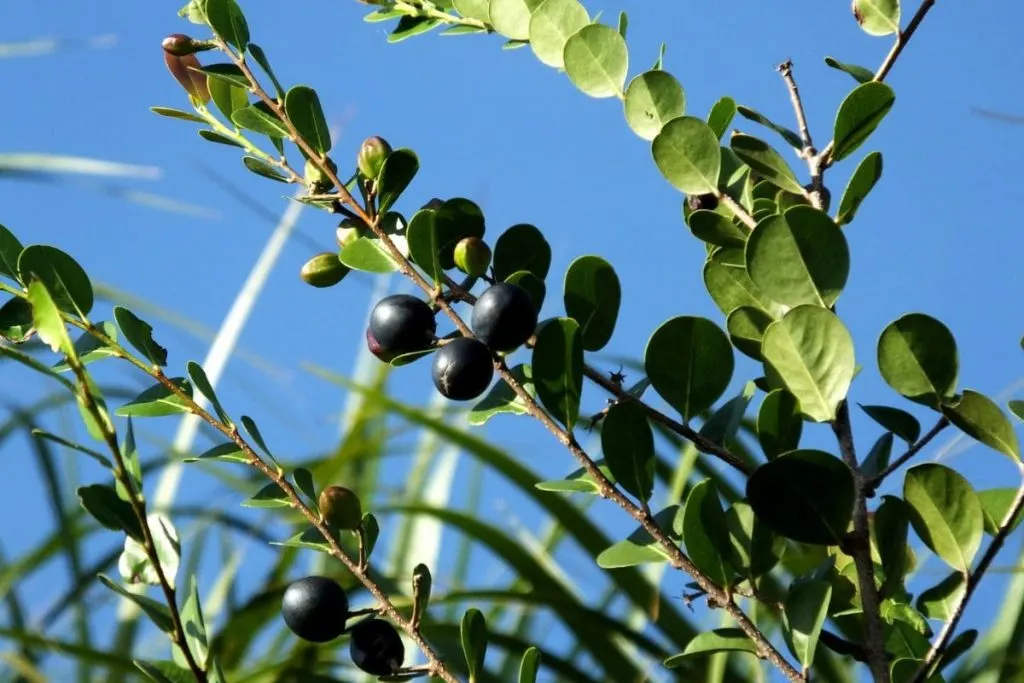
You can make a paradise garden in front of your home full of cocoplum trees. You can also use them as hedged plants.
Try to make an attractive corner with a small cocoplum shrub in your home, you’ll love it! You can display it on your terrace. No matter what you do, grow it in your homes or gardens, it won’t fail you.
You will enjoy this amazing plant all year round. It will create a perfect green space for you and you’ll be so thankful for having it. Easy to care for, looks amazing, what else to ask for?
Is Cocoplum Poisonous To Dogs?
Cocoplum isn’t poisonous to dogs. Dogs can eat the fruit of a cocoplum tree. Its fruits are perfectly edible and easy to pick. People mostly make jams and jellies out of it.
How Fast Does Cocoplum Grow?
Red tip cultivar takes about 12 months to develop properly. However, the green tip cultivar takes a bit less, around 10 months to develop its hedges. We advise you to prune them every 2-3 years to keep their shape a well-looking one.
Silver Buttonwood: Stunning hedge tree for your garden.
Does Cocoplum Grow Well In Partial Shade?
Cocoplums grow well in full sun conditions combined with partial shade. If you choose a partial shade position, make sure you water them regularly.
It is established that branches in the partial shade look a bit differently from the ones that grow in a sunny location.
When planting, find the edge of your garden that has lots of direct sunlight in the morning, and partial shade in the afternoon.
Care Guide For Cocoplum Plant When Grown Outdoors
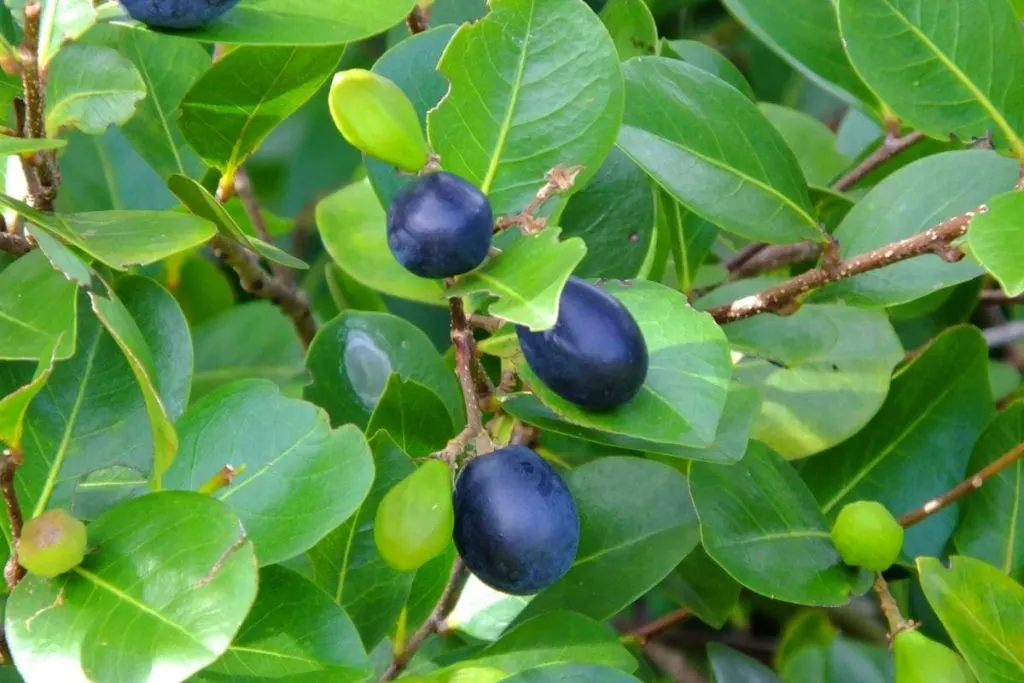
If you already recognized the value of this amazing plant, congrats! You’ve made a good choice and now it’s time to learn about its care guide outdoors.
The big family usually prefers growing plants outdoors because it is a lot easier. If you have kids, it’s risky to have beautiful rare plants around the house.
Ball games and running around could cause some damage. Once they go to the university, you can move them in. For now, let’s learn how to grow cocoplum outdoors.
Light Needs
In the summer, when it’s super warm outside, don’t be afraid to expose your plant to direct sunlight. Miami’s temperatures in summer are around 85 F. In the morning, they’re around 75-80.
This doesn’t mean you should keep your plant covered or hide it away from direct sunlight. Morning sunlight will do good for your plant.
It will help your plant to develop its flowers and fruits faster. It will give its leaves that shiny appearance and much more.
However, in order to survive a full day in such high temperatures, partial shade is a must too. Grow it in the garden areas with partial shade in the afternoon.
Morning sun, and partial shade in the afternoon, that’s a winning combination right there.
Watering Schedule
Its watering process is very simple. Like most Miami plants, your outdoor plants will seek water. This especially goes for the summertime. If you wait a few days to water your plant, it might be too late.
To save its pink and purple flowers, make sure you water them every 8-9 days. This is a formal schedule for watering cocoplum trees.
Moderate watering would be every 7 days. However, that applies to the weeks in which temperatures rise.
When watering, make sure you left every part of its soil watered so its spreads around equally. Missed parts could be an issue later on.
In the springtime, don’t be afraid to add liquid fertilizer to the water. This only applies to its flowering/blooming state.
Soil Type
Cocoplum shrubs will do best in sandy soils and soils with a pH of 6.6 to 8.4. Frost and lower temperatures can freeze its soil. That can do much damage to your shrub.
If the frost met the roots, a problem occurs and you won’t be able to do much to save it. In low temperatures, make sure you cover the surface of the soil.
Fertilizer
When growing outdoors, fertilize your cocoplum shrub 3 times per year. Do it in the spring, summer, and fall. We advise you buy a good granular fertilizer or a liquid fertilizer.
Temperature
If the temperature drops below 40 degrees, don’t expect your cocoplum shrub to survive. They don’t stand low temperatures well, at all! They thrive best in temperature ratios between 65 and 80 F.
Humidity
Florida, Miami especially is well known for its high humidity levels. Even though these plants adapt well, they are never fully adapted to high humidity.
When the humidity levels are too high you’ll be able to spot marks on the leaves. It is usually a sign of the disease. It’s best to bring your plant indoors at this point.
You can use the garage if you have enough light for it to survive for a shorter period of time. Believe it or not, people often buy a dehumidifier for this plant. If you don’t do it, the disease spreads and the plant dies.
Pruning
Many people prune this plant every 3 years to only reduce its size. We advise you to do the same. In case you want to make its shape better, do some pruning.
Pruning to prevent something or any other reasons can be harmful to your plant. Prune only when needed. It’s best to do hard-cuttings (hard pruning). Use sharp hedge trimmers when pruning.
Propagation
The easiest way to propagate your cocoplum plant is with cuttings. Do it like this:
- prepare a sharp knife for the cuttings,
- use only mature tips for the cuttings,
- cuttings should be around 6 inches long,
- use rooting hormone when planting the cuttings in the new soil,
- water properly when you plant it,
- place it on a sunny location,
- patience and progress in about 4-5 weeks.
Care Guide For Cocoplum Plant When Grown Indoors
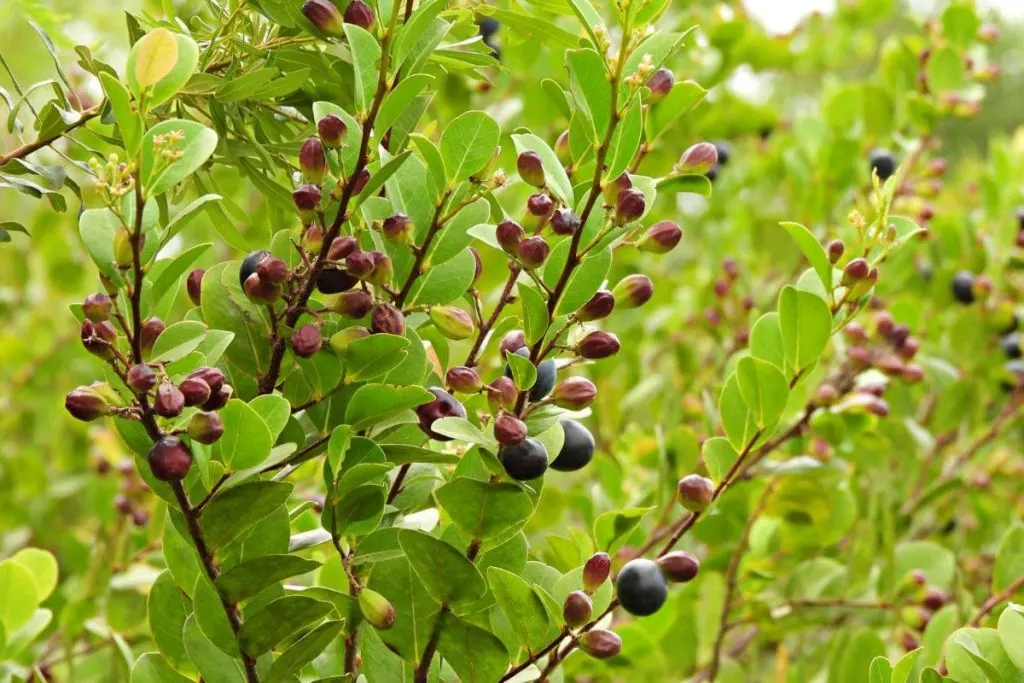
Once the kids don’t throw the ball around anymore, you’re ready to grow plants indoors. If you see a cocoplum shrub as an indoor plant more than an outdoor one, this is your section.
Below we bring you a simple care guide for an indoor cocoplum shrub. Let’s check it out.
Light Needs
You’ll have more shade inside at the start, which is great because you won’t be carrying the plant around.
It will have a permanent position where it will receive adequate light. We advise you to place it on the south window. This is where it will get the perfect light for its growth.
Watering Schedule
When you grow a cocoplum plant as a houseplant (for a while until it grows), watering is reduced. Water it carefully every 9-10 days.
You can also do it every 7 days, but when you do that, you can water more abundantly because of the time gap. Tapwater is fine if you’re wondering.
Soil Type
Regardless of whether it is outside or inside, the type of soil does not change. Even indoors, use sandy soils and soils with a pH between 6.6 to 8.4.
Fertilizer
When your plant is outside, fertilize it 3 times. However, when you grow it indoors, it is enough to chase the cocoplum shrub once a year.
Some people even do it once, in the spring, before the flowering season. Good granular fertilizer or liquid mixed with water that you apply when watering.
Temperature
The temperature inside will be perfect for this plant and this is the least of your worries. Avoid locations where the plant is exposed to direct contact with air conditioners, etc.
This is by no means good for your plant. There won’t be excessively low temperatures inside either, so don’t worry about this factor.
Humidity
No average house has humidity levels around 80 or 70%. So this is good news for your plant. The humidity levels below are exactly what the cocoplum needs.
Pruning
Just as it would be pruned outside to reduce its size, do the same for the indoor plant. No additional pruning is needed for this plant.
However, it happens that indoor plants get sick sooner. If a disease occurs that affects the leaves, then of course prune immediately to prevent further damage.
Propagation
Propagate your indoor plant with cuttings. Do the same ritual/process for its propagation as for the outdoor cocoplum tree.
FAQs on Cocoplum plant

Let’s learn a few more things about the cocoplum shrubs below.
Is Cocoplum A South Florida Native?
Is Cocoplum Rare?
Final Thought On Cocoplum
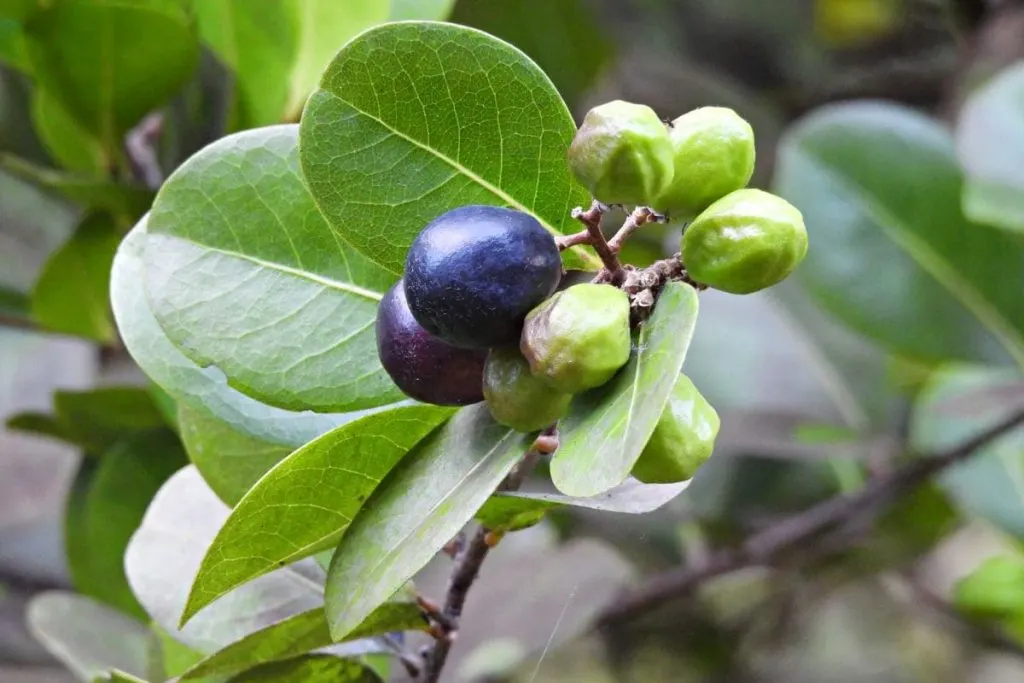
And what do you say? Did you like today’s article about your new garden plant cocoplum? Or maybe a house plant?
If this shrub is not what you want, how about types of azaleas? They are the perfect colorful woody shrubs for your garden.
Maybe you like flowering trees yellow even more? Whatever you choose, I’m sure you’ll garden will look amazing with colorful blossoms in the spring and summer.
While we’re on the subject of colors and vibrant blooms, don’t forget about perennials that bloom all summer. They might cheer you up as well.
That would be all for today, see you soon. Hope this article was helpful!

